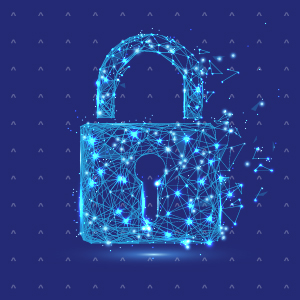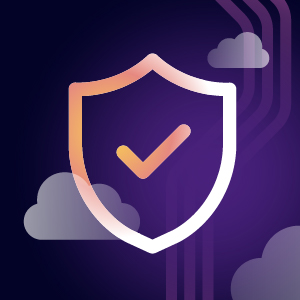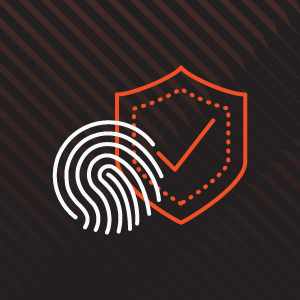The recent emphasis on reforming the Federal workforce has highlighted the pivotal role of effective human capital management (HCM) in driving mission readiness and Government efficiency. From improving recruitment processes, including accelerated hiring timelines and increased transparency, to implementing strategic workforce development initiatives leveraging skills-based assessments, a modern HCM approach is being used to rapidly transform agencies with the expectation that they will continue to deliver exceptional public service.
Carahsoft and our partners equip Government professionals with the technologies and strategies that will shape the next generation of public service excellence in this evolving landscape.
Modern AI-powered recruitment platforms, predictive analytics and cutting-edge workforce development tools enable agencies to streamline talent acquisition, enhance employee engagement and strengthen team resilience in an era of increasing demands and limited resources.
For over two decades, Carahsoft’s commitment has been to help Government agencies harness the power of information technology to fulfill their missions, and that focus has never been more relevant than it is today.
Here are the top human capital events of 2025 and 2026.
June 3 | Washington, DC | In-Person Event
At the center of technology, culture and strategy is customer experience (CX). At the Government Customer Experience and Engagement Summit, attendees can learn about new and emerging technology from experts in the Federal Government. Sessions will focus on digital transformation and how agencies can utilize technology to build trust through a customer-first culture. By learning how to streamline operations, agencies can focus on building trust, enhancing services and creating a culture that inspires lasting impacts for customers.
Sessions to look out for:
- Balancing CX with Cybersecurity
- Data Analytics: Turning Insights into Impact
- The Employee Experience: A Foundation for CX
- Harnessing Your Inner Leader: Empowering a CX Culture
Carahsoft is looking forward to sponsoring the event this year with leaders in the industry. Join us, Government leaders and our CX technology and solutions experts to address and discuss the future. Featured sessions will highlight empowering a CX culture, leveraging automation and analytics to enhance CX and overcome organizational silos.
June 25 | City of Industry, CA | In-Person Event
This single-day summit unites IT leaders and LA County businesses to explore the immediate and long-term opportunities for artificial intelligence (AI). Attendees can expect sessions that dive deep into AI in the Public Sector, discussing the latest trends and use-cases, its opportunities and challenges and AI’s potential for bold leadership and novel possibilities. Whether new to the industry or a veteran, there is something for all attendees to learn from and opportunities to share in.
Sessions to look out for:
- The AI Leadership Imperative: Navigating Change
- AI Demystified: For All of Us
- Unified Intelligence: Collaborative Data Strategies for AI Across LA County
As an anchor sponsor, Carahsoft will be attending the summit alongside several of our partners including Adobe, Salesforce, Accenture, Glean, Knowledgelake and more. Sessions held will showcase many of our vendors with city Government leaders in California to showcase artificial intelligence.
June 25 | Arlington, VA | In-Person Event
Before INSA’s New IC event, join an exclusive in-person career networking opportunity focused on the Intelligence Community and national security professionals. The Career Conversations event brings together cleared talent and leading organizations for meaningful dialogue that goes beyond traditional job descriptions. With the majority of cleared candidates being passive job seekers, this unique format emphasizes relationship-building and strategic conversations that lead to successful placements and partnerships.
Event highlights:
- Career Conversations: 12-2 pm networking format
- Exclusive access to passive cleared talent
- Strategic teaming and partnering opportunities
- Focus on Intelligence Community and national security roles
Carahsoft partners with ClearanceJobs and the Intelligence and National Security Alliance (INSA) to support this premier career networking event. We are committed to connecting cleared professionals with mission-critical opportunities while supporting the unique talent acquisition needs of the Intelligence Community. Through strategic partnerships and specialized recruitment technologies, Carahsoft and our partners help bridge the gap between exceptional cleared talent and the agencies that depend on their expertise.
July 13-16 | Louisville, KY | In-Person Event
The National Association of State Personnel Executives (NAPSE) provides a collaborative forum for State Human Resource (HR) leaders to share strategies and best practices on developing an effective workforce. Through this annual event, NAPSE, an affiliate organization of The Council of State Governments, hosts human capital directors and senior-level staff to discuss the latest trends in HR, improving the overall quality of HR resources and services provided to State Governments.
Carahsoft and our partners connect state HR leaders with cutting-edge human capital technologies designed specifically for Government environments at NASPE’s 2025 Annual Meeting. The conference allows attendees to spend time networking and learning about human resource products. Sponsors of the event will get to spotlight their solutions during the scheduled sessions. Be on the lookout for more information on this event.
NASWA Summit
September 10-11 | Dallas, TX | In-Person Event
The National Association of State Workforce Agencies (NASWA), a national organization representing all 50 state workforce agencies, D.C. and U.S. territories, hosts this premier workforce summit. Leaders in the state workforce agencies and key staff will discuss key issues in the labor system, such as training, employment, careers and wages. This year, the main discussions will be on unemployment insurance, employment statistics and labor market information.
View the Agenda at a Glance for an overview of this year’s Summit.
As a key technology partner, Carahsoft is committed to bringing you the latest tech in human capital. Eightfold.ai, Salesforce, AWS, Deloitte and many other vendors have been attending this event for over 4 years. Come check out the latest and greatest updates at their booths. We hope you will join us at NASWA Summit to learn, network and prepare for our future workforce.
September 9-10 | Denver, CO | In-Person Event
Leap HR welcomes HR leaders, IT professionals and State and Local Government officials to brainstorm and collaborate ways to retain the Public Sector workforce, enhance performance and manage talent across various careers. Uncover the Public Sector’s best practices and data-driven insights on attracting and retaining the next generation of the workforce, driving talent mobility, incentivizing high performance and employee growth and more.
Sessions to look out for:
- Discover: Optimizing Performance Management with Data Analytics
- Develop: What More Can We Learn About the Technology That Can Help Us Reduce Time to Hire?
- Action: How Can You Utilize Data and Analytics to Inform Your Performance Strategy and Increase Effectiveness Within Your Workforce?
As an official partner of Leap HR, Carahsoft showcases the technology solutions that solve State and Local Government’s most pressing workforce challenges. This year’s event will be led by expert speakers in human resources roles from State and Local Governments.
September 16-18 | Las Vegas | In-Person Event
This event brings together leaders in the HR technology community to share industry insights. Attendees can expect a large HR expo, exhibit and leading educational sessions on the future of HR. Do not miss this key executive event to explore the latest in HR technology, gain exclusive access to current research, build professional ties and interact with top thought leaders to learn about the intersection of technology and human capital.
Sessions to look out for:
- Investor Summit Welcome: Unveiling the Future of WorkTech Investment
- The Balancing Act: Human Sustainability in the Age of AI
- Crafting Exceptional Employee Journeys with Better HR Tech Adaption
Carahsoft and our partners look forward to showcasing the best in human resources technology at HR Tech 2025. Multiple sessions will take place at the same time on similar topics, so attendees learn what best aligns with their hr needs. Come check out partner exhibits at the expo. Look out for more information on the agenda of speakers.
September 18-19 | Reston, VA | In-Person Event
ClearanceJobs Connect hosts leaders in the national security space to discuss recruiting professionals. As the only event focused on security cleared recruiting, ClearanceJobs Connect recruits Government speakers from both the Defense Office of Hearings and Appeals (DOHA) and the Defense Counterintelligence and Security Agency (DCSA). Attendees will learn about the latest security clearance policies, network with associates and discover the newest and greatest industry insights.
Details about the sessions for the event will be announced later this year.
Carahsoft’s strategic partnership with ClearanceJobs positions us at the epicenter of national security talent acquisition. We are excited to attend ClearanceJobs Connect this autumn alongside several of its partners. Through specialized sessions and partner demonstrations, we’ll showcase how modern recruitment technologies can streamline the complex process of finding, vetting and onboarding cleared talent while maintaining the highest security standards.
April 20-22 | San Antonio, TX | In-Person Event
WorldatWork Total Rewards ‘26 is the premier event for Total Rewards revolutionaries, providing a platform to form deep connections with professionals and gain new, inventive insights focused around transforming talent within your organization. With innovative sessions and curated networking aimed at fostering meaningful connections, this event offers a powerful, personalized experience that delivers immediate solutions within a unique, festival-like atmosphere. Experience a transformative journey that enables your organization to enlist real solutions in the realm of human capital.
Carahsoft’s participation in WorldatWork Total Rewards ’26 showcases our commitment to revolutionizing how Government organizations approach compensation and benefits. Our technology partners will demonstrate how modern total rewards platforms enable agencies to compete for top talent with dynamic, personalized compensation packages while maintaining fiscal responsibility and regulatory compliance. For an idea of what to expect, check out the program overview for WorldatWork Total Rewards ’26.
Only by fully leveraging its workforce can agencies and organizations carry out their objectives effectively and efficiently. By using modern workforce analytics and strategic HR solutions, agencies can enhance their ability to attract, develop and retain the skilled professionals needed to achieve mission objectives.
Carahsoft is committed to supporting Government workforce transformation through proven technology partnerships and comprehensive solutions. Our vendor ecosystem spans the complete human capital management spectrum, from recruitment and onboarding platforms to performance analytics and professional development tools.
Ready to transform your workforce strategy? Contact us at HRIT@carahsoft.com to discover how our Human Capital Technology solutions portfolio can drive mission success through strategic human capital management.










